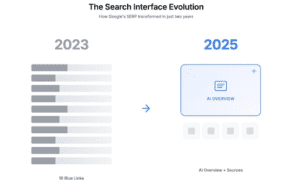The graphic design software segment is lately in the midst of a small revolution, fuelled by both failed and successful efforts of consolidation, as well as growing interest spurred by the introduction of AI-assisted tools. But as artificial intelligence becomes increasingly embedded in the design process, a thorny problem threatens to stall its progress.
The diminishing supply of quality data on which to train algorithms is becoming an issue across the industry. However, synthetic data is poised to pick up the slack and keep the ball rolling on AI progress. Who in the software industry will adapt to this new reality and who will be left behind?
Industry Consolidation
Australian unicorn Canva has made its largest acquisition to date by spending more than $1 billion to buy the professional design software company Serif. According to a company statement released late last month, the move is meant to consolidate the startup’s position on the digital graphics market, and bolster its ambition to provide “the world’s most comprehensive suite of visual communication tools”.
Best known for its Affinity product series, Serif was founded in England in 1987 and found prominence by offering graphic design and image editing capabilities which proved particularly popular with Mac users. For Canva, acquiring Serif is only the latest move in their long-term attempt to position themselves in direct competition with industry leader Adobe in preparation of potentially going public. Serif is the seventh European company acquired by the Australian startup, joining the ranks of Kaleido.ai and Pixabay under the Canva roof.
Founded in 2013, Canva quickly found success in the graphics market with its easy-to-use tools and smart pricing compared to the industry mainstays such as Adobe’s ubiquitous Photoshop suite. But going against Adobe, an industry behemoth with more than four decades of experience and eight times as many employees is no easy feat.
When a company reaches the point of market domination where the name of its product is widely used as a verb, as is the case for Photoshop, it makes itself difficult to dislodge from such a commanding position. However, several factors are currently making the sector much more unpredictable and open to coups than in previous years.
Industry facing significant shifts
The first such spanner in the works is the fallout from Adobe’s failed takeover of interface design company Figma. Despite rallying on the stock market throughout last year, Adobe could now find itself at a strategic disadvantage after it was blocked by competition regulators from acquiring the firm in late 2023. The failed takeover is far from being a deathblow for a company like Adobe—but it has certainly shaken things up a bit, leading to a sharp drop in Adobe’s share value earlier this year.
The second disrupting factor, and one that casts its shadow on the entire industry rather than any particular company, is the meteoric rise of AI technology in the world of graphic design and image editing software. All the companies mentioned so far experienced rapid growth in recent years following the adoption of AI-powered tools, which are revolutionising the digital graphics sector. Harnessing the power of artificial intelligence has made visual tools easier to use for novices, while also greatly streamlining the work of professionals.
But while AI is set to dominate future expansion plans for companies in this sector, its true potential is hampered by the technology’s growing pains. Specifically, new data on which to train AI algorithms is becoming scarce, as not even the immense flow of data produced by billions of Internet users cannot keep up with the exponential demands of AI tech.
This is particularly true in the relevant case of images, where public and private digital archives have already been scoured clean by algorithms, leaving mostly low-quality data available for future training. In the absence of fresh, high-quality image data, the exponential growth of AI capabilities expected by the industry is going to be severely stunted, with plateaus rather than leaps expected in the following years.
Synthetic data offers a promising path forward
The increasingly popular solution to this headache is the adoption of synthetic data—computer-manufactured content which can take the place of real-world information when training algorithms.
Vitally, synthetic data is not only virtually endless in terms of supply, but also carries the advantage of staying clear of privacy concerns by not using any real-world information. It is already proving invaluable in fields such as banking, insurance, or healthcare, where private information is often highly protected—with good reason.
Visual synthetic data, such as computer-generated graphics or images, is also proving important, allowing companies that use AI to move away from the ethically and legally dubious practice of scraping the internet for user-posted images, as well as avoiding the high costs of private image libraries.
With so much of the digital graphics sector’s recent trajectory being determined by the adoption of AI tools, it is imperative that the capabilities and sophistication of such tools continue to develop at a brisk pace. But without new data to feed on, AI risks missing its cue to push the field ever forward. Adopting synthetic data is no longer a matter of if, but a matter of when, and any company truly looking towards the future should take heed.



































